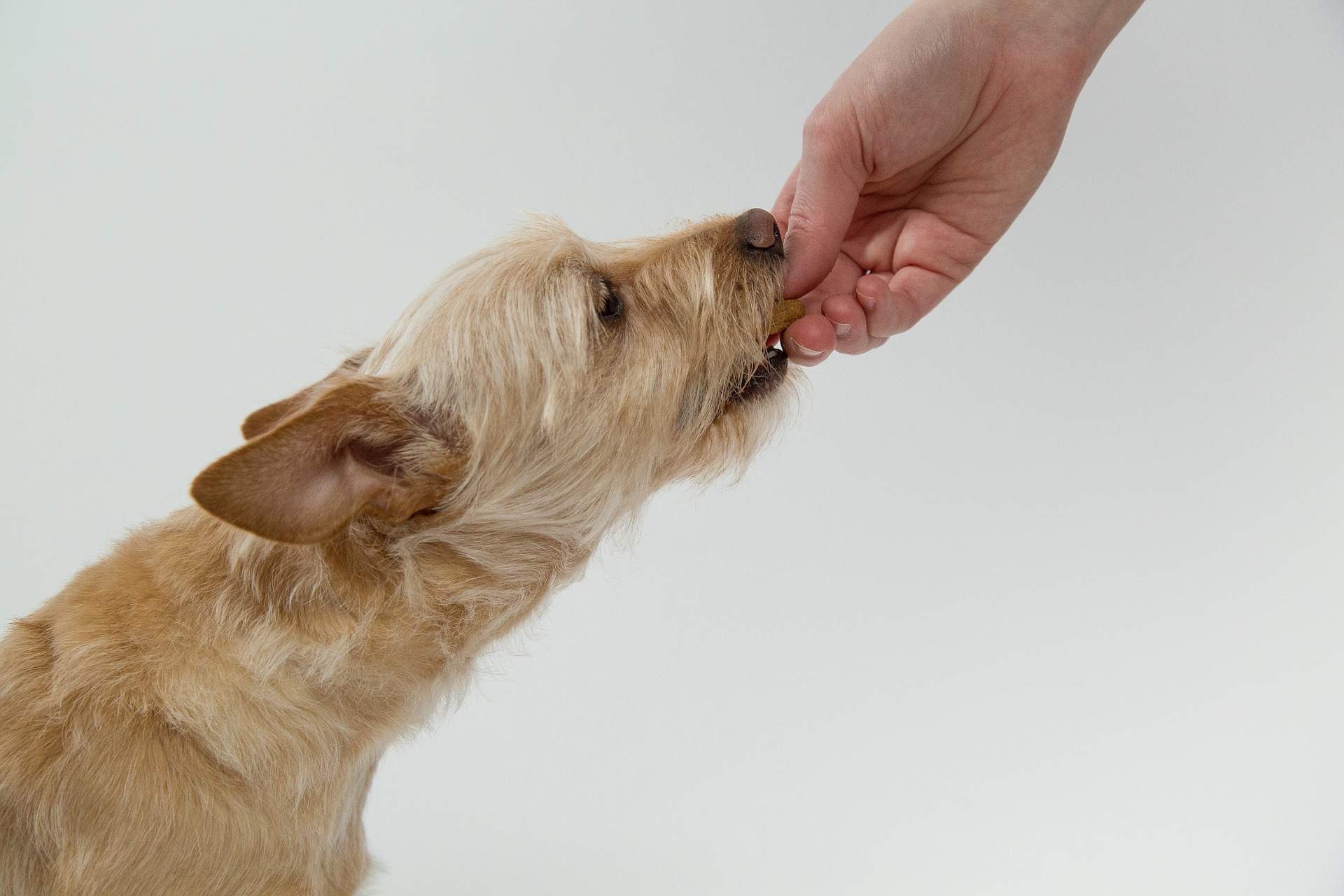
the scientific study of pet nutrition by veterinary nutrition specialists and experts.
Top Five Nutrition Mistakes Pet Owners Make

Mistake #1: Not feeding a complete and balanced food.
Every food (but not treats) should have a nutritional adequacy statement from the Association of American Feed Control Officials (AAFCO) [often called an “AAFCO statement”] that describes if the food is complete and balanced according to AAFCO guidelines. If it is complete and balanced (meaning it has all the nutrients your pet needs), this statement on the label will describe how the company decided it was ok to feed your pet. These statements will look like this:
- “Animal feeding tests using AAFCO procedures substantiate that X food provides complete and balanced nutrition…” or
- “X food is formulated to meet AAFCO nutrient profiles.”
What you want to look out for is any food that is NOT complete and balanced and it will instead state: “this product is intended for intermittent or supplemental feeding only.” This means it does NOT have all the essential nutrients a healthy pet needs and should only be a treat!
Mistake #2: Giving too many treats and extras.
Speaking of treats, all the little extras that your pet gets everyday can add up to a lot of extra calories and unbalance the diet if you’re not careful. We recommend no more than 10% of calories come from foods that are not your pet’s main pet food. That means all the training treats for puppies, cheese slices to give medication, biscuits from the bank teller, and dental chews should be accounted for. Many companies put calories on treatsbut if it’s not on the label, you can always call a company and ask. If they don’t know or can’t tell you, don’t feed that treat! For some low calorie options, check out our blog on treats.
Mistake #3: Not knowing your calories.
After I explain about the 10% treat rule, usually I then get asked, “But how do I know what 10% of my pet’s diet is?”. This is a great question and if you’re not sure, you’re not alone. A recent study that we did here at Cummings School of Veterinary Medicine at Tufts University found that only 3% of owners knew how many calories they were feeding their pet! There are some fancy equations that can be used to calculate each pet’s needs based on their body weight, but there’s also a math-free version to figuring out how many calories your pet needs. Check out our blog on calculating calories and a calculator that will do the math for you! As a helpful starting point, the average 12 lb cat needs about 250 calories per day and a lean healthy 65 lb dog needs about 1,000 calories per day. Be sure to check the calorie content on your pet’s food and make sure the amount you’re feeding matches with the calories they need!
Mistake #4: Not feeding for the right life stage.
Those AAFCO statements are helpful not only to let you know if a food is complete and balanced, but they also will tell you for which pets the diet is appropriate. AAFCO has a few different categories: adult (1 year of age and older) or growth, which is split into large breed and non-large breed dogs. Pregnant animals also fall under ‘growth,’ except if feeding trials are done. When you look at that AAFCO statement, it will say either adult, growth including large breed dogs, growth excluding large breed dogs, or all life stages (which means it covers everyone). All life stages will meet the minimum needs of your pet, but if they’re a healthy adult, it may be providing extra nutrients they might not need, so best to stick to what is right for your pet. Never switch over to an adult food until your pet has reached full skeletal maturity or is at least 1 year old – they need those nutrients to help them grow!
Mistake #5: Picking a food based on the marketing.
Shiny bags, promises of perfect teeth, and ‘natural’ and ‘holistic’ descriptions on pet food bags may sound appealing, but it’s important to separate fact from fiction and make informed decisions about what to feed your pet. For example, ‘holistic’ has no legal definition in pet food and is simply a marketing term for which each company decides the meaning! Using mainly the ingredient list is also a common mistake that owners make when selecting a food. Pets need nutrients, not ingredients, so just looking at a list of puzzle pieces won’t help you decide how the puzzle fits together and helps your pet when combined. We have a helpful pet owner’s guide for selecting pet food based on solid evidence instead of marketing or advertising.
Want to read more information on feeding your pet?
Subscribe to always know when we add new material!
Recommended Posts

Can Diet Help With My Dog’s Seizures?
January 18, 2024

The Most Popular Holiday Foods…That Your Pet Should Avoid!
December 08, 2023

Veterinarian Recommended Pet Foods: What You Need to Know
November 05, 2023

